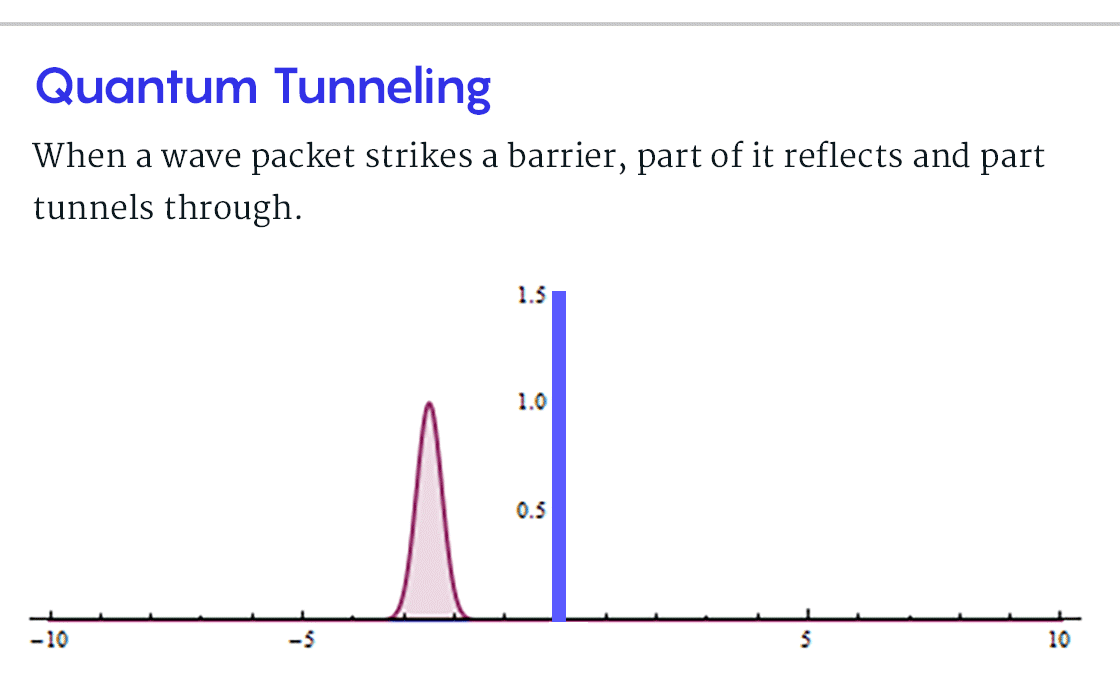
Recent experiments show that particles should be able to go faster than light when they quantum mechanically “tunnel” through walls.
QuantaMagazine has just published a very amazing article about tunneling effect and its consequences.
Some excerpts below:
Physicists quickly saw that particles’ ability to tunnel through barriers solved many mysteries. It explained various chemical bonds and radioactive decays and how hydrogen nuclei in the sun are able to overcome their mutual repulsion and fuse, producing sunlight.
In 1962, a semiconductor engineer at Texas Instruments named Thomas Hartman wrote a paper that explicitly embraced the shocking implications of the math.
Hartman found that a barrier seemed to act as a shortcut. When a particle tunnels, the trip takes less time than if the barrier weren’t there. Even more astonishing, he calculated that thickening a barrier hardly increases the time it takes for a particle to tunnel across it. This means that with a sufficiently thick barrier, particles could hop from one side to the other faster than light traveling the same distance through empty space.
In the most highly praised measurement yet, reported in Nature in July, Steinberg’s group in Toronto used what’s called the Larmor clock method to gauge how long rubidium atoms took to tunnel through a repulsive laser field.
The recent experiments are bringing new attention to an unresolved issue. In the six decades since Hartman’s paper, no matter how carefully physicists have redefined tunneling time or how precisely they’ve measured it in the lab, they’ve found that quantum tunneling invariably exhibits the Hartman effect. Tunneling seems to be incurably, robustly superluminal.
At the macroscopic scale, how long an object takes to go from A to B is simply the distance divided by the object’s speed. But quantum theory teaches us that precise knowledge of both distance and speed is forbidden. In quantum theory, a particle has a range of possible locations and speeds. From among these options, definite properties somehow crystallize at the moment of measurement. How this happens is one of the deepest questions.
